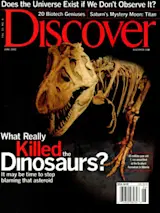When Justin Congdon was a teenager, he spenthis days in the woods of northeastern Pennsylvania, shooting pheasantsand trapping muskrats so he could sell their pelts for $4 apiece. Hewould have laughed had anyone told him he might spend the rest of hislife in a forest preserve trapping turtles, X-raying their bellies, andpainstakingly gluing their shells back together when they had the badluck to be hit by cars.
But that's precisely what he's doingon this late May afternoon at the University of Michigan's E. S. GeorgeReserve, as he has done every spring and summer for 27 years. Carryinga leather tool belt with a makeshift rectal thermometer, needle-nosepliers, and black Sharpie pen, he patrols East Marsh, an 11.5-acrehabitat with water lilies and wild irises. Most of the time he's on thelookout for female turtles— Blanding's, Common Snapping, and MidlandPainted— abundant with fertilized eggs and ready to unload them on thefirst warm day. ...














